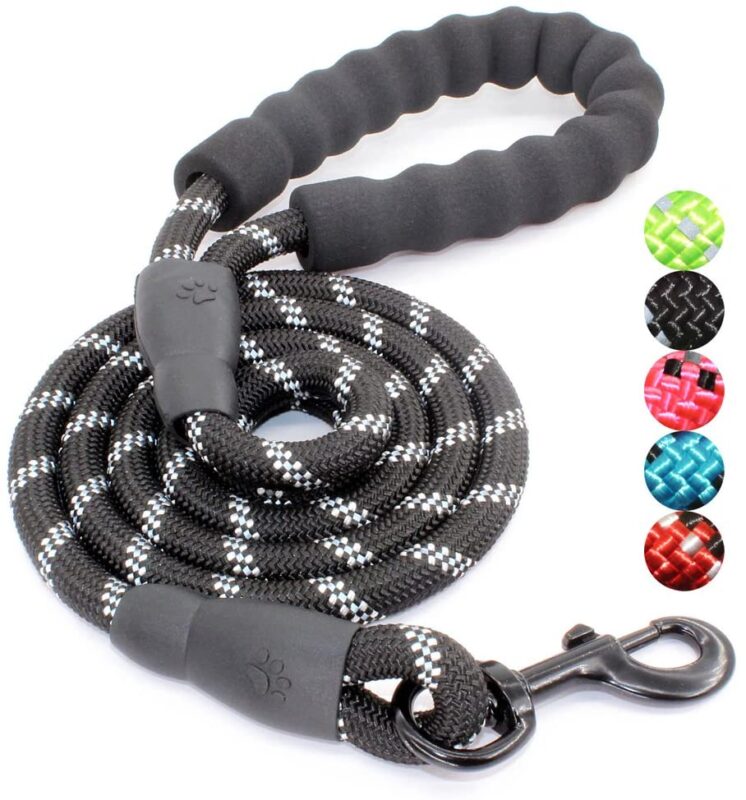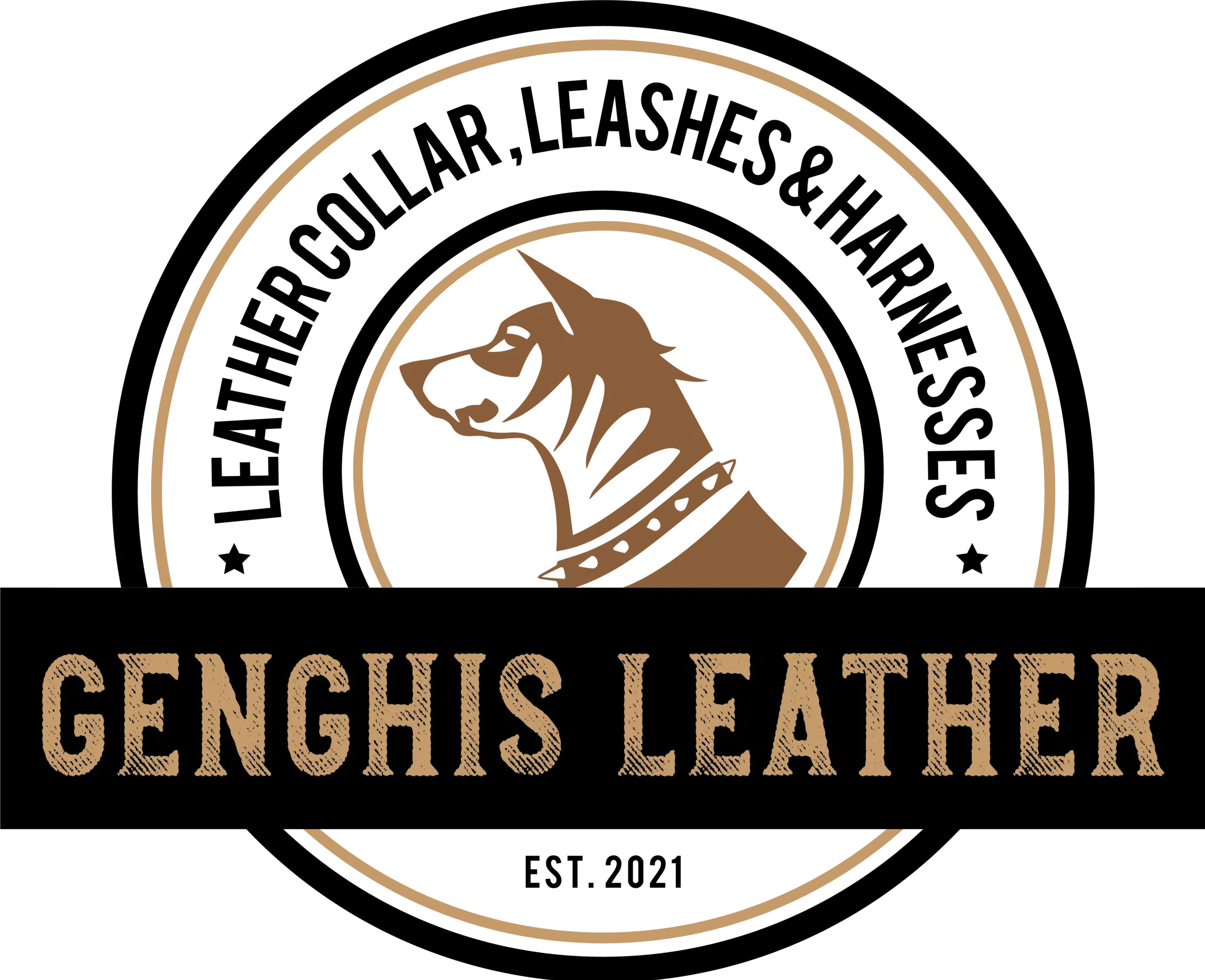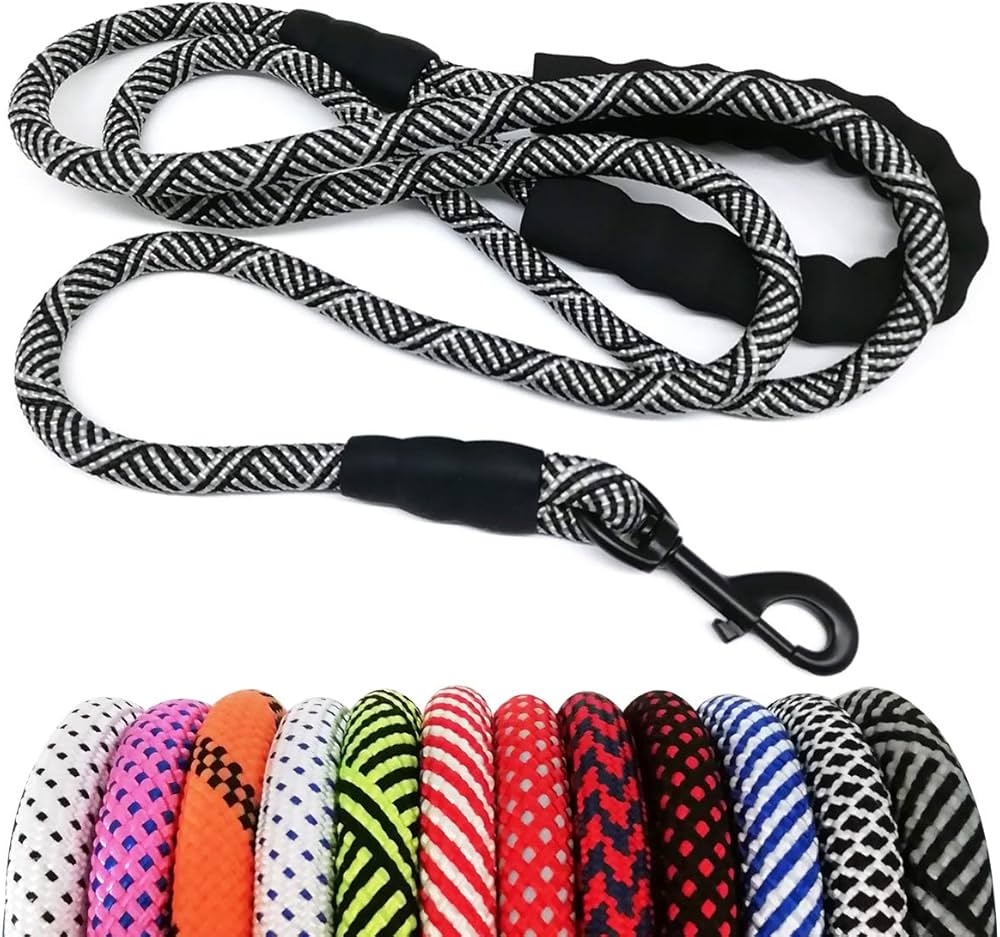DIY Nylon Rope Dog Leash: Easy Steps for a Custom, Durable Lead 2024
Are you tired of spending a fortune on dog leashes that don’t last? We’ve got the perfect solution for you: making your own durable dog leash out of nylon rope. It’s a cost-effective and customizable…
Are you tired of spending a fortune on dog leashes that don’t last? We’ve got the perfect solution for you: making your own durable dog leash out of nylon rope. It’s a cost-effective and customizable option that’ll have your pup strutting in style.
Creating a DIY dog leash from nylon rope isn’t just a fun project – it’s practical too. Nylon rope is strong, lightweight, and resistant to wear and tear, making it an ideal material for dog leashes. Whether you’ve got a tiny Chihuahua or a hefty Newfoundland, we’ll show you how to create a leash that’s customized to your furry friend’s needs. Plus, you’ll learn a valuable skill that can save you money in the long run.
Benefits of DIY Nylon Rope Dog Leashes
DIY nylon rope dog leashes offer many advantages for pet owners. Here’s why crafting your own leash is a smart choice:
- Cost-Effective
Making a dog leash from nylon rope is significantly cheaper than purchasing pre-made options. We’ve found that the materials for a DIY leash often cost less than $5, while store-bought leashes can range from $15 to $50 or more. - Customizable Length
With a DIY approach, we can create leashes of any length. This flexibility allows for short leashes for controlled walks or longer leads for training and outdoor adventures. A 50-foot leash, for example, is perfect for recall training in open spaces. - Strength and Durability
Nylon rope, especially diamond braid or similar types, offers exceptional strength. These leashes can withstand the pulling force of large dogs without breaking or fraying. The durability of nylon ensures the leash lasts for years, even with regular use. - Lightweight and Comfortable
Even though its strength, nylon rope remains lightweight. We’ve noticed that leashes made from 1 to 1.5-inch diameter rope are comfortable to hold and don’t cause hand fatigue during long walks. - Weather-Resistant
Nylon rope resists water, UV rays, and mildew. This weather-resistant quality makes it ideal for outdoor use in various conditions, from rainy days to sunny beach trips. - Easy to Clean
Nylon rope leashes are simple to maintain. They can be easily washed with soap and water, making them hygienic for both the dog and the owner. - Personalization Options
DIY leashes allow for personal touches. We can add knots for better grip, incorporate different colors, or even add reflective materials for nighttime visibility. - Skill Development
Creating a dog leash develops useful skills like knot tying and basic crafting. These skills can be applied to other DIY projects in the future. - Adjustable Features
By incorporating exact knots or hardware, we can create adjustable features. This adaptability allows the leash to grow with a puppy or accommodate different handling styles. - Eco-Friendly Choice
Making a leash from nylon rope often uses less packaging and resources compared to commercially produced options, making it a more environmentally conscious choice. - Multi-Purpose Use
A long nylon rope leash can serve multiple purposes. It’s suitable for regular walks, training sessions, and can even be used as a temporary tether when needed. - Replaceable Parts
If a part of the leash wears out, it’s easy to replace just that section rather than buying an entirely new leash. This feature extends the life of the leash and reduces waste.
By crafting our own nylon rope dog leashes, we gain control over quality, functionality, and design while enjoying important cost savings. These benefits make DIY leashes an attractive option for dog owners looking for a practical and personalized solution to their pet’s walking needs.
Materials Needed
To create your own nylon rope dog leash, we’ll need a few essential items. Here’s a list of materials you’ll want to gather before starting your DIY project:
Nylon Rope
- Diamond braid nylon rope or utility cord/nylon string
- 9mm to 12mm diameter for standard leashes
- Length: desired leash length plus extra for handle and adjustments (e.g., 12 feet for a 10-foot leash)
Hardware
- Locking/screwgate carabiner (preferred for security)
- Alternative: snap hook (less secure but still functional)
- Cutting carry out: knife, multi-tool, or strong scissors
- Heat source: lighter or heat gun
| Item | Specification | Purpose |
|---|---|---|
| Nylon Rope | 9-12mm diameter, 12+ feet | Main leash material |
| Carabiner | Locking/screwgate | Secure attachment to collar |
| Cutting Tool | Knife/scissors | Rope cutting |
| Heat Source | Lighter/heat gun | Seal rope ends |
We’ve chosen these materials for their durability, versatility, and ease of use. Nylon rope’s weather-resistant properties make it ideal for outdoor use in various conditions. The diamond braid or utility cord options offer consistent exterior and resistance to unwinding, ensuring your leash remains strong and reliable.
The locking carabiner provides an extra layer of security, preventing accidental detachment during walks. For those preferring a traditional look, the snap hook option is available, though it’s slightly less secure.
Our recommended tools ensure clean cuts and proper sealing of the rope ends, preventing fraying and extending the life of your DIY leash. With these materials on hand, we’re ready to create a custom dog leash that’s both functional and cost-effective.
Preparing the Nylon Rope
Cutting the Rope
We’ll start by cutting the nylon rope to the desired length for our DIY dog leash. It’s crucial to add extra length for the clasp and handle. For a standard six-foot leash, we recommend cutting the rope to about 9-10 feet. This additional length ensures we have enough material to work with for attachments and adjustments.
When cutting the rope, use sharp scissors or a knife to make a clean, precise cut. A clean cut minimizes fraying and makes the next steps easier. Remember, it’s always better to cut the rope slightly longer than needed – we can always trim it later if necessary.
Preventing Fraying
Once we’ve cut our nylon rope to length, it’s essential to prevent the ends from fraying. Frayed ends not only look untidy but can also weaken the rope over time. We have two effective methods to seal the rope ends:
- Heat Sealing: Using a lighter or small torch, carefully melt the cut ends of the nylon rope. This process fuses the fibers together, creating a solid end that won’t unravel. Be cautious when using heat – melt just enough to seal the end without weakening the rope structure.
- Heat Shrink Tubing: Alternatively, we can use heat shrink tubing to cover and secure the rope ends. Slide a piece of heat shrink tubing over each end of the rope, then apply heat using a heat gun or lighter. The tubing will shrink and tightly seal around the rope end, preventing fraying.
Both methods are effective, so choose the one that best suits your comfort level and available tools. Heat sealing is quicker and requires no additional materials, while heat shrink tubing provides a neater finish and additional protection.
By properly cutting and sealing our nylon rope, we’ve laid the foundation for a durable and professional-looking dog leash. These preparatory steps ensure our leash will withstand the rigors of daily use while maintaining its integrity and appearance.
Creating the Handle
Creating a comfortable and secure handle is crucial for a functional dog leash. We’ll explore two methods for forming the handle: using a simple knot and braiding. Both techniques offer durability and customization options for your DIY nylon rope dog leash.
Forming the Loop
To form the handle loop, start by measuring the desired size for your wrist. For most adults, a 6-8 inch loop works well. Create the loop using an overhand knot or figure 8 knot, which are both secure and easy to tie. Thread the rope end through the formed loop, adjusting until you achieve the right size. Pull the knot tight, ensuring it’s snug but not overly constricted. For added comfort, you can wrap the handle section with soft material or create a braided cover.
Securing the Handle
After forming the loop, it’s essential to secure the handle for long-lasting use. Double-check that your chosen knot is tight and properly formed. For extra security, consider using a secondary knot or adding a few stitches with strong thread. If you’ve opted for a braided handle, secure the ends by threading them through loops of the braid itself. Trim any excess rope, leaving about 1/4 inch. Finally, use a heat source to melt the cut ends, preventing fraying and ensuring a polished finish.

Photo by Nicki Dick on Pexels
Attaching the Clasp
Attaching the clasp is a crucial step in creating a secure and functional dog leash from nylon rope. We’ll explore two methods for attaching the clasp: using metal clamps and plastic clamps.
Using Metal Clamps
Metal clamps provide a robust attachment for nylon rope dog leashes, especially for larger breeds. To secure the clasp with metal clamps:
- Place the clamp on a flat surface with the level side down.
- Insert the rope into the clamp, ensuring equal width on both ends.
- Tighten the clamp firmly around the rope using pliers.
- Bend each part of the clamp separately to fit the rope closely.
- Compress the clamp by tapping it over a wooden board with a small hammer.
While this method is more time-consuming than using plastic clamps, it creates a stronger joint. The leash’s firmness is secured by both the weld and the metal clamp, offering additional durability for energetic dogs.
Using Plastic Clamps
Plastic clamps offer a quicker and easier attachment method for nylon rope dog leashes. Here’s how to use them effectively:
- Select a plastic clamp that matches the diameter of your nylon rope.
- Thread the rope through the clamp, leaving enough length for tying a knot.
- Create a loop at the end of the rope and pass it through the clasp.
- Tie a secure knot, such as a figure-eight or overhand knot, to hold the clasp in place.
- Slide the plastic clamp over the knot and tighten it firmly.
- Trim any excess rope and melt the end to prevent fraying.
Plastic clamps are ideal for smaller to medium-sized dogs and provide a neat, professional finish to your DIY dog leash. They’re also easier to adjust or replace if needed, offering flexibility in your leash design.
Adding Optional Features
After creating the basic nylon rope dog leash, we can enhance its functionality and appearance with optional features. These additions not only improve the leash’s performance but also allow for personalization.
Heat Shrink Tubing
Heat shrink tubing is a versatile material that can significantly improve your nylon rope dog leash. It provides added durability, comfort, and grip to key areas of the leash. To apply heat shrink tubing:
- Cut a piece of tubing slightly longer than the area you want to cover.
- Slide the tubing over the rope at the desired location.
- Use a heat gun or butane lighter to carefully shrink the tubing.
- Ensure even heat distribution for a snug fit.
Apply heat shrink tubing to the handle for improved grip, over knots for added security, and near the clasp to reinforce this high-stress area. This simple addition enhances the leash’s longevity and comfort for both you and your dog.
Decorative Knots
Incorporating decorative knots into your nylon rope dog leash adds a unique touch and can serve practical purposes. Popular knots for leashes include:
- Monkey’s Fist: Creates a ball-like knot that can act as a handle or weight.
- Turk’s Head: Forms an attractive band around the rope, useful for marking exact points.
- Crown Knot: Provides an aesthetically pleasing end to the leash.
To add decorative knots:
- Choose a knot that complements your leash design.
- Practice the knot with a separate piece of rope before attempting it on your leash.
- Tie the knot in the desired location, ensuring it’s tight and secure.
- Trim excess rope ends and seal them to prevent fraying.
These knots not only enhance the leash’s appearance but can also improve functionality by providing additional grip points or visual markers for training purposes.

Finishing Touches and Safety Check
Adding Leather Accents
We’ve found that leather accents add a touch of elegance to nylon rope dog leashes. Here’s how to incorporate them:
- Cut small leather pieces to fit around metal clamps
- Use a darning needle and embroidery floss to stitch leather in place
- Wrap leather around handle for improved grip and comfort
Leather not only enhances aesthetics but also reinforces key stress points on the leash.
Seizing Technique
Seizing is an effective method to secure loose ends and prevent fraying:
- Use paracord or thin nylon cord for seizing
- Wrap tightly around loose ends of rope
- Tie off securely and trim excess cord
This technique ensures durability and a polished look for your DIY dog leash.
Reflective Elements
Incorporating reflective materials improves visibility during low-light conditions:
- Thread reflective cord through rope strands
- Attach reflective tape at intervals along the leash
- Use reflective paint on handle and clasp areas
These additions enhance safety during evening walks or in dimly lit areas.
Safety Inspection
Before using your homemade nylon rope dog leash, conduct a thorough safety check:
- Test handle strength by applying firm pressure
- Ensure clasp functions properly and secures tightly
- Check for any sharp edges or loose fibers
- Verify all knots and attachments are secure
Regular inspections maintain the leash’s integrity and your dog’s safety.
By implementing these finishing touches and safety measures, we’ve created a durable, stylish, and safe nylon rope dog leash. This DIY project not only saves money but also allows for personalization to suit your dog’s exact needs.
Conclusion
We’ve explored the art of crafting a custom nylon rope dog leash customized to your needs. This DIY project offers a budget-friendly alternative that doesn’t compromise on quality or durability. By following our guide you’ll create a leash that’s not only functional but also a reflection of your personal style. Remember to prioritize safety with thorough checks before use. With your new skills you’ll be ready to tackle future pet projects and enjoy walks with your furry friend using a leash you made with your own hands.

